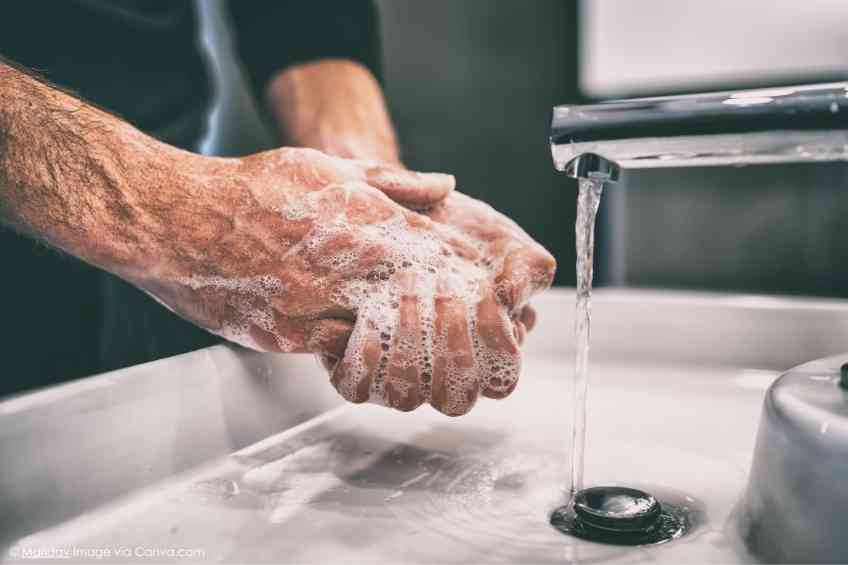By John Salak –
Handwashing became a big thing with the onset of Covid 19, which is a good thing because properly scrubbing hands with soap is a great way to ward off all sorts of germs.
The Centers for Disease Control and Prevention (CDC), in fact, reports that proper handwashing reduces the number of people who get sick with diarrhea by up to 40 percent; and cuts respiratory illnesses, like colds, in the general population by 16 to 21 percent, and slices absenteeism due to gastrointestinal illness in schoolchildren by 29 to 57 percent.
Unfortunately, the United States Department of Agriculture (USDA) warns that a whopping 97 percent of people don’t adequately wash their hands either because they don’t use soap and or don’t scrub long enough.
If the USDA’s notice on poor washing performance isn’t bad enough, Flinders University in Australia warns that hand basins or sinks are hotspots for dangerous microbes that can cause illnesses including pneumonia, Legionnaires’ disease and wound infections.
The research team that found hand basin biofilms at least in Australia contained a diverse range of pathogens including microbes typically found in water, as well as other pathogens not found in water. These findings are also likely to apply in a similar fashion to the sinks and hand basins in the U.S.
“This research shows that hand basins may be playing a significant and underestimated role in healthcare-associated infections,” noted Associate Professor Harriet Whiley of the College of Science and Engineering.
“The study also found that residential hand basins have a more diverse bacterial community present on hand basin biofilms compared with hospitals. There was also a higher number of Legionella bacteria present in the residential samples compared with those taken from hospitals,” she added.
Biofilms, a slimy substance found on drains and around the faucet of hand basins, contain a community of microbes including disease-causing pathogens that can pose a threat to human health, the study explained. These pathogens in hospital sinks are likely transferred to the biofilm from patients or staff during handwashing, incoming water supply or biological waste, the study noted.
The Flinders study compared biofilms in hospital and residential hand basins to assess infection risk levels and possible routes of contamination.
“The difference in the diversity of the microbial communities could be due to more regular cleaning, usage and the design of basins in hospitals through the implementation of healthcare infection control practices,” lead researcher Claire Hayward added. “This poses a risk to patients receiving healthcare in the home, which has been emerging as an alternative to extensive inpatient hospital stays to reduce the burden on the healthcare system.
“Patients receiving healthcare in the home need to be informed of infection control practices such as cleaning hand basin outlets and drains using effective disinfectants,” Hayward added.
While additional research on appropriate cleaning protocols is required, the research team advised cleaning sinks up and other high-touch areas such as light switches and doorknobs twice a day with detergent.













